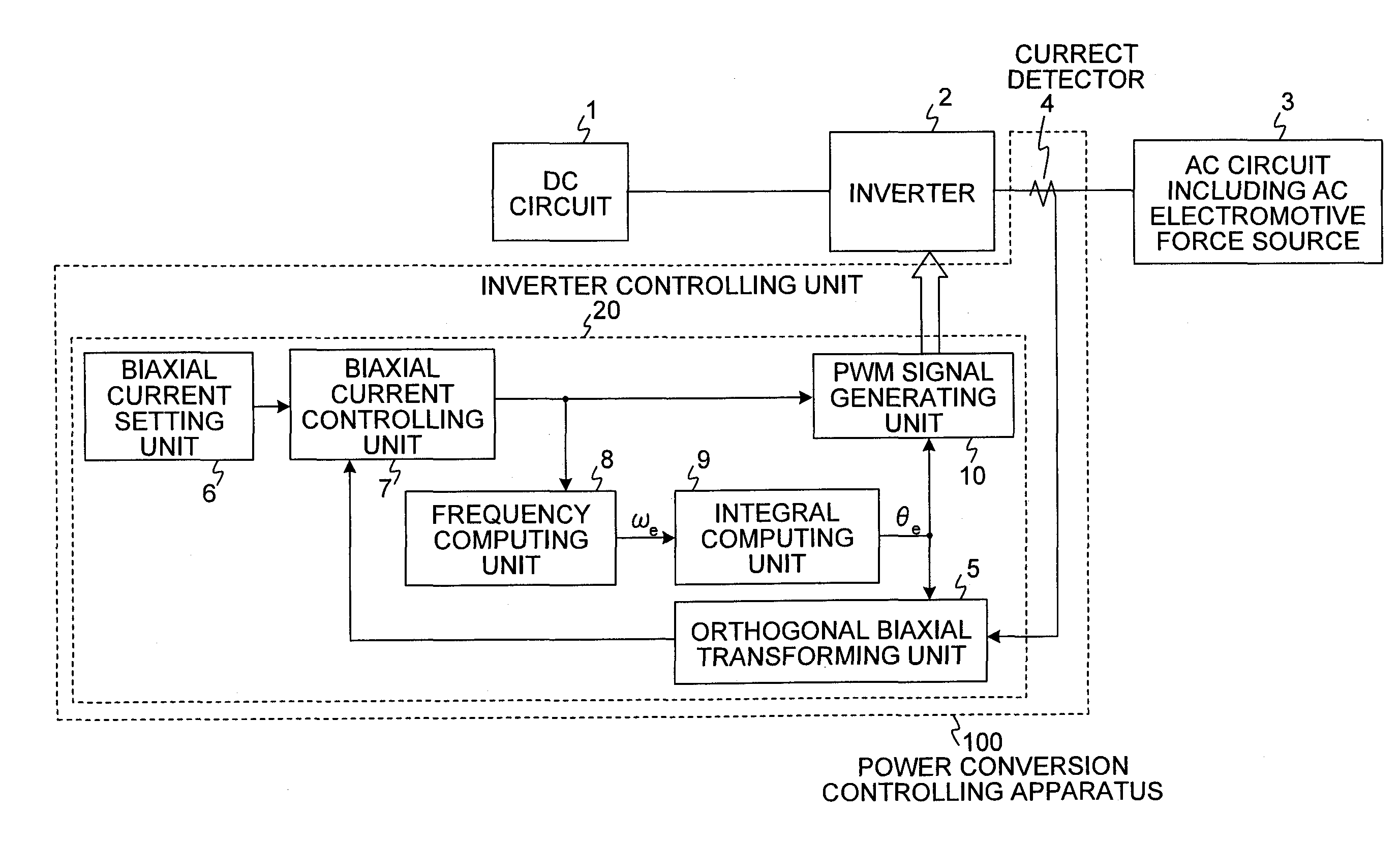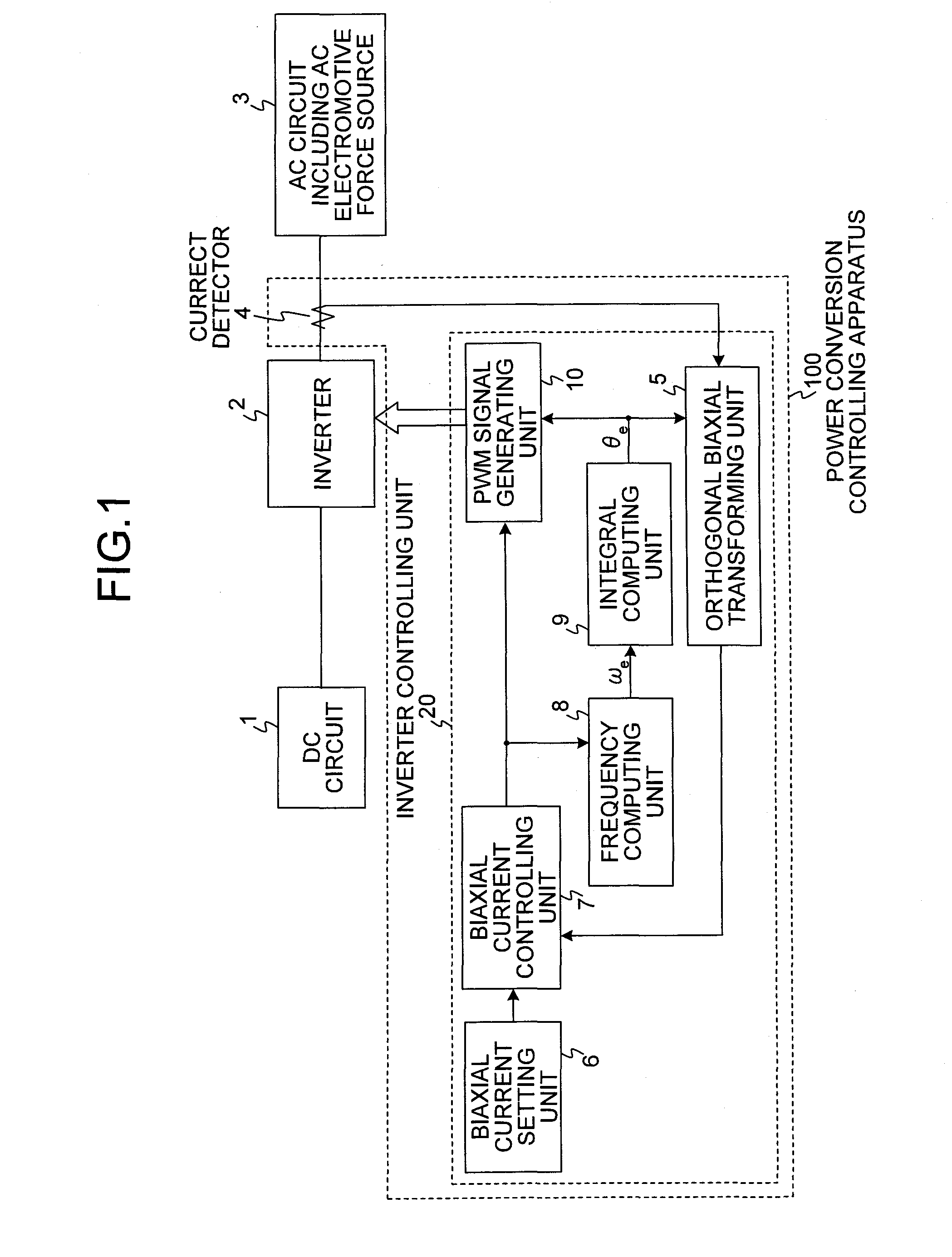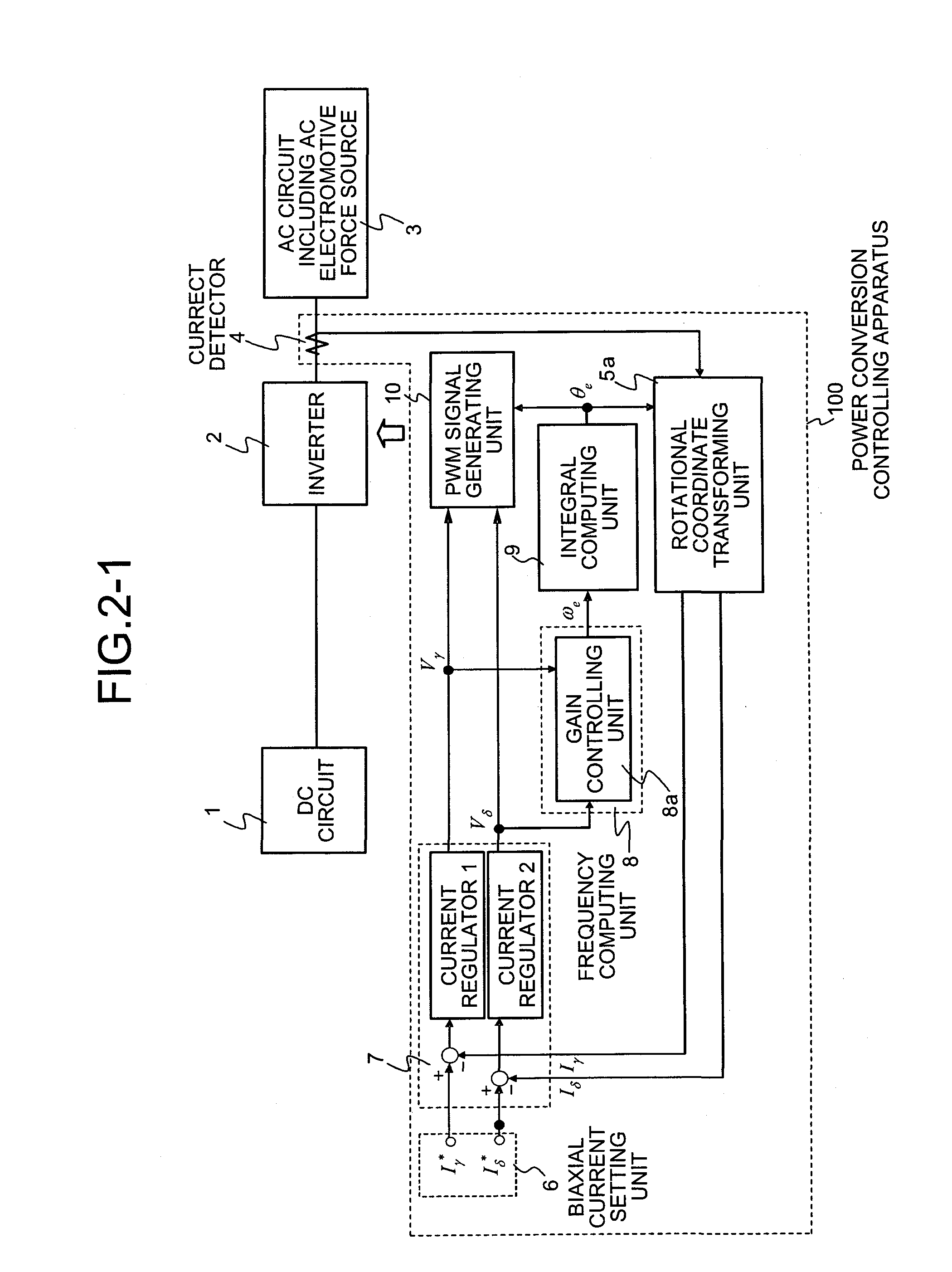Power conversion control device, power conversion control method, and power conversion control program
a power conversion control and control device technology, applied in the direction of dynamo-electric converter control, motor/generator/converter stopper, electronic commutator, etc., can solve the problems of low-speed operation of low torque and substantially less responsiveness, and achieve high precision
- Summary
- Abstract
- Description
- Claims
- Application Information
AI Technical Summary
Benefits of technology
Problems solved by technology
Method used
Image
Examples
first embodiment
[0128]FIG. 1 is a diagram of a basic configuration of a power conversion controlling apparatus according to the present invention. The power conversion controlling apparatus according to a first embodiment is used to control an inverter that performs power conversion between DC and AC when an AC circuit has an electromotive force source.
[0129]In FIG. 1, numeral 1 is a DC circuit, numeral 2 is an inverter connected between the DC circuit 1 and an AC circuit 3 to exchange power between DC and AC with a switching device, numeral 3 is the AC circuit including the electromotive force source (hereinafter also called an “AC circuit”), and numeral 100 is a power conversion controlling apparatus. In embodiments that follow, numeral 2 is illustrated as an inverter, but numeral 2 may be an AC-DC converter that performs AC-DC conversion depending on types of the connected DC circuit 1 and the AC circuit 3.
[0130]The DC circuit 1 is a circuit including a DC power supply, a DC load, or a capacitor...
second embodiment
[0157]A power conversion controlling apparatus according to a second embodiment uses, in the frequency computing unit 8 (gain controlling unit 8a) of the power conversion controlling apparatus in FIG. 2-1, a value obtained by multiplying the amplitude command value corresponding to the active component of current among the amplitude command values output by the biaxial current controlling unit 7 by a gain, that obtained by multiplying a time variation reduced value of the amplitude command value corresponding to the active component of current by a gain, or a time variation reduced value of such a gain multiplied value is selected as the operating frequency ωe of the inverter 7.
[0158]More specifically, the operating frequency ωe of the inverter 2 is determined by multiplying the amplitude command value corresponding to the active component of current by a gain among the amplitude command values output from the biaxial current controlling unit 7. In this case, instead of the amplitud...
third embodiment
[0162]FIG. 8 is a diagram of an AC power conversion controlling apparatus according to a third embodiment. In FIG. 8, the same numerals are attached to components having functions equivalent to those of components in FIG. 2-1 to omit a description of common portions. The power conversion controlling apparatus according to the third embodiment has a configuration in which an impedance compensating unit is provided in the frequency computing unit 8.
[0163]In FIG. 8, the frequency computing unit 8 is provided with an impedance compensating unit 8b that outputs a compensation value for compensating for a stationary or transient voltage drop in a line impedance portion when an amplitude command value corresponding to the active component of current among the amplitude command values output by the biaxial current controlling unit 7 changes. The frequency computing unit 8 adopts a value obtained by multiplying an added value of an amplitude command value corresponding to the active componen...
PUM
 Login to View More
Login to View More Abstract
Description
Claims
Application Information
 Login to View More
Login to View More - R&D
- Intellectual Property
- Life Sciences
- Materials
- Tech Scout
- Unparalleled Data Quality
- Higher Quality Content
- 60% Fewer Hallucinations
Browse by: Latest US Patents, China's latest patents, Technical Efficacy Thesaurus, Application Domain, Technology Topic, Popular Technical Reports.
© 2025 PatSnap. All rights reserved.Legal|Privacy policy|Modern Slavery Act Transparency Statement|Sitemap|About US| Contact US: help@patsnap.com



